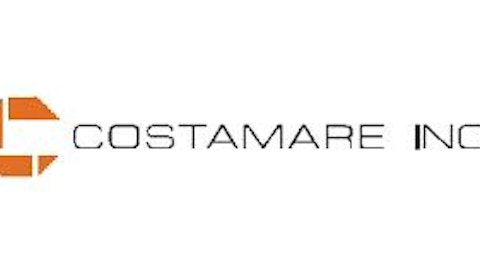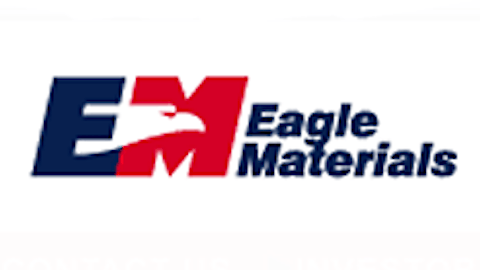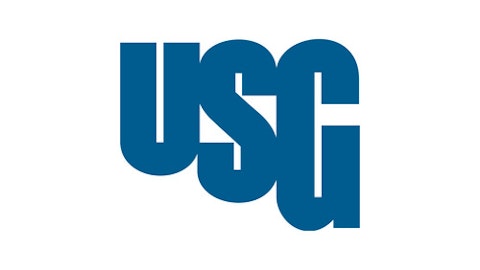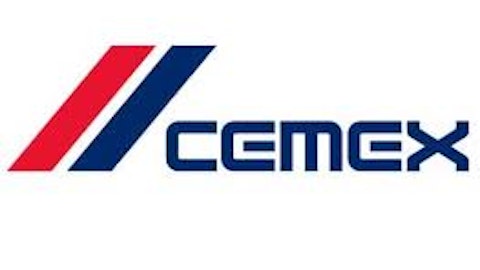Debt can be useful for expansion, capital spending, or leverage returns. However, too much debt can rapidly lead to stagnating returns, poor cash flows, and a rapid descent into zombie state.

There are some signs that suggest we could be standing at the foot of a debt crisis as companies that have borrowed heavily in this period of low interest rates will have to refinance at higher rates in the future, which will lead to poor performance for those companies that have borrowed heavily.
Having said that, even now there are several companies that are finding it hard to finance their debt as sales have been slow during the past few years, leading to increasing levels of borrowing, deteriorating credit ratings, and higher rates of interest.
The culprits
Surprisingly, there are not that many companies that fail the above debt test, however, there are some and the results are listed below.
First up is producer of construction aggregates, such as crushed stone and gravel, Vulcan Materials Company (NYSE:VMC), which has seen net debt remain constant while interest costs have risen over the last few years.
| Metric | 2010 | 2011 | 2012 |
|---|---|---|---|
| Financial costs | -$162 | -$209 | -$207 |
| EBITDA | $355 | $344 | $404 |
| Net debt | $2,670 | $2,660 | $2,402 |
| Interest cover | 2.2 | 1.7 | 2 |
| Net Debt to EBITDA | 7.5 | 7.7 | 6 |
Figures in $US millions except for ratios
During each of the last three years, Vulcan Materials Company (NYSE:VMC) has not been able to cover its interest costs the required 2.5 times by EBITDA, indicating that the company’s debt could be too much for it to handle.
Furthermore, viewed over a three-year time frame, debt and interest costs still do not appear to be sustainable:
| Metric | Value |
|---|---|
| 3-yr Average Interest Costs | -$193 |
| 3-yr Average EBITDA | $368 |
| 3-yr average Net Debt | $2,577 |
| Interest cover | 1.9 |
| Net Debt to EBITDA | 7.0 |
Figures in $US millions except for ratios
Vulcan Materials Company (NYSE:VMC)’s net debt position has averaged seven times the size of its EBITDA during the past three years, a very high level. Additionally, the company has only been able to cover the interest on its debt 1.9 times on average, below the minimum requirement of 2.5 times that, for the purpose of this piece, signifies financial security.
Next up
Next up is oil tanker supplier and leasing company Scorpio Tankers Inc. (NYSE:STNG). Scorpio Tankers Inc. (NYSE:STNG) has been wrestling with overcapacity and low leasing rates in the tanker industry during the past few years. As a result, the company’s finances are not as strong as they should be.
| Metric | 2010 | 2011 | 2012 |
|---|---|---|---|
| Financial costs | -$3 | -$7 | -$9 |
| EBITDA | $11 | $9 | $8 |
| Net debt | $127 | $143 | $135 |
| Interest cover | 3.7 | 1.3 | 0.9 |
| Net Debt to EBITDA | 11.6 | 15.9 | 16.9 |
Figures in $US millions except for ratios
The last few years have been tough for Scorpio Tankers Inc. (NYSE:STNG) and the company has been struggling to fund the interest on its debt. Purchasing tankers usually requires a lot of capital and debt.
Scorpio Tankers Inc. (NYSE:STNG)’s net debt to EBITDA ratio has been growing rapidly as earnings fall and borrowing ticks up slightly. Indeed, the company was not able to wholly cover its interest costs during 2012. Additionally, over a three-year period, interest costs have only been covered 1.5 times and the company’s net debt to EBITDA ratio has averaged 14.5.
| Metric | Value |
|---|---|
| 3-yr Average Interest Costs | -$6 |
| 3-yr Average EBITDA | $9 |
| 3-yr average Net Debt | $135 |
| Interest cover | 1.5 |
| Net Debt to EBITDA | 14.5 |
Figures in $US millions except for ratios
And finally
Finally, producer and distributor of building materials, USG Corporation (NYSE:USG).
| Metric | 2010 | 2011 | 2012 |
|---|---|---|---|
| Financial costs | -$183 | -$211 | -$206 |
| EBITDA | $32 | $65 | $255 |
| Net debt | $1,546 | $1,774 | $1,656 |
| Interest cover | 0.2 | 0.3 | 1.2 |
| Net Debt to EBITDA | 48.3 | 27.3 | 6.5 |
Figures in $US millions except for ratios
As the majority of USG Corporation (NYSE:USG)’s sales are linked to the housing market, the company has had a tough time turning a profit during the past three years. Indeed, the company’s debt, at one point, hit 48 times EBITDA. The company has recovered recently but interest costs are still only covered by EBITDA 1.2 times.
| Metric | Value |
|---|---|
| 3-yr Average Interest Costs | -$200 |
| 3-yr Average EBITDA | $117 |
| 3-yr average Net Debt | $1,659 |
| Interest cover | 0.6 |
| Net Debt to EBITDA | 14.1 |
Figures in $US millions except for ratios
Moreover, looking at a three-year average, the company has not been able to cover its interest costs consistently, and debt has amounted to around 14x EBITDA , indicating a weak balance sheet and putting the company in a position of financial instability.
However, things are improving, but USG Corporation (NYSE:USG) is a prime example of a company that borrowed too much in the time of boom but now, after things have turned sour, cannot afford to service its debt .
Note: Berkshire Hathaway may be the largest shareholder of USG Corporation (NYSE:USG) but Berkshire’s position is tiny and was initiated back in 2000. Berkshire’s position is around $500 million, or in other terms, 10% of the company’s profit for 2013 — a non-event.
Conclusion
The three companies above exhibit worrying trends in debt. Personally, as an investor who likes to preserve his capital, I would stay away until the companies, or their managements commit to a debt reduction plan, or business improves to the stage where interest costs are not consuming such a large amount of earnings — over a period of several years, not just a one off.
For a successful long-term investment, companies need to display that they are fiscally prudent and can maintain a consistent level of debt and easily cover interest costs; something none of the three companies above can do.
The article These Companies Are Finding It Difficult to Handle Their Debt originally appeared on Fool.com and is written by Rupert Hargreaves.
Fool contributor Rupert Hargreaves has no position in any stocks mentioned. The Motley Fool has no position in any of the stocks mentioned. Rupert is a member of The Motley Fool Blog Network — entries represent the personal opinion of the blogger and are not formally edited.
Copyright © 1995 – 2013 The Motley Fool, LLC. All rights reserved. The Motley Fool has a disclosure policy.





